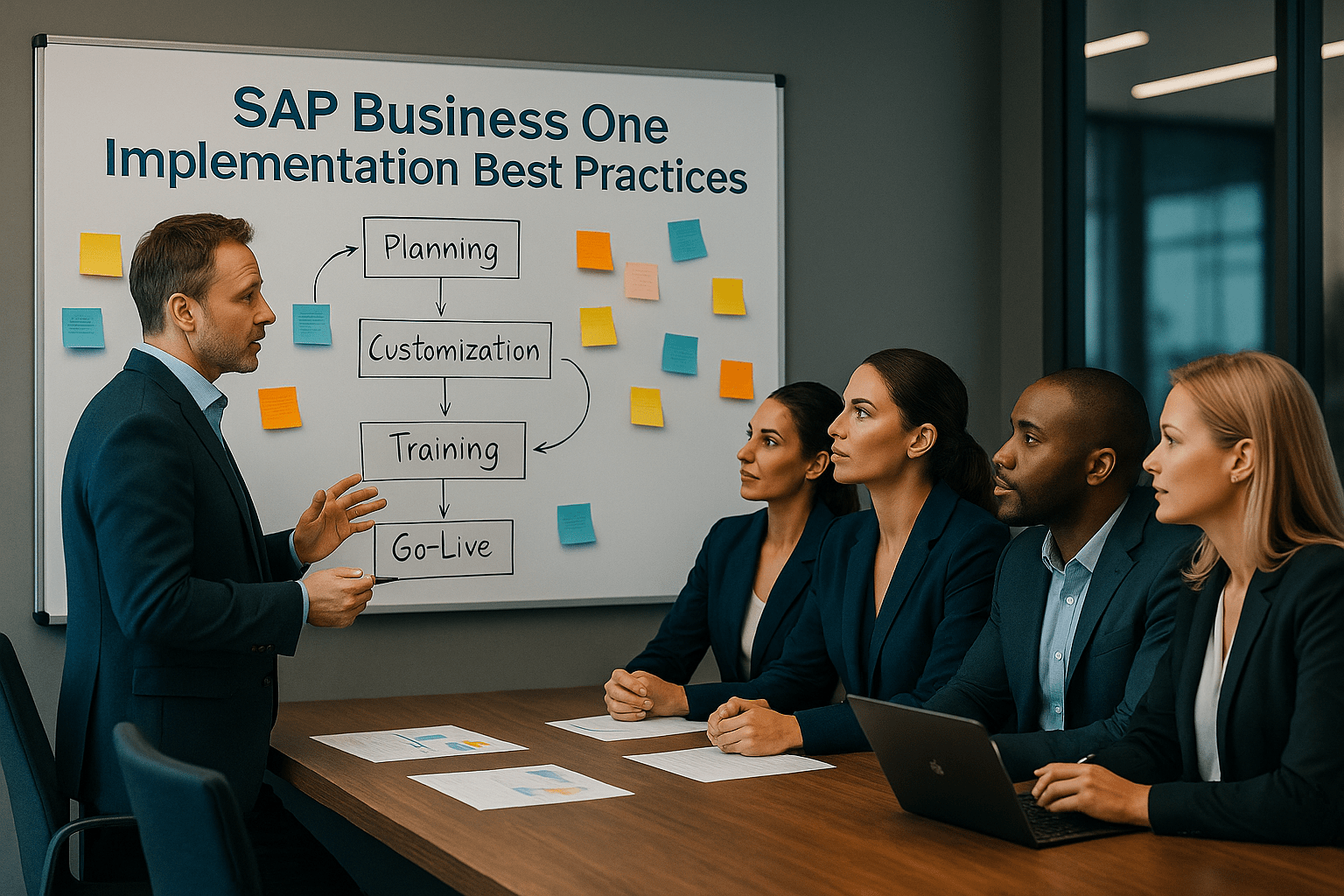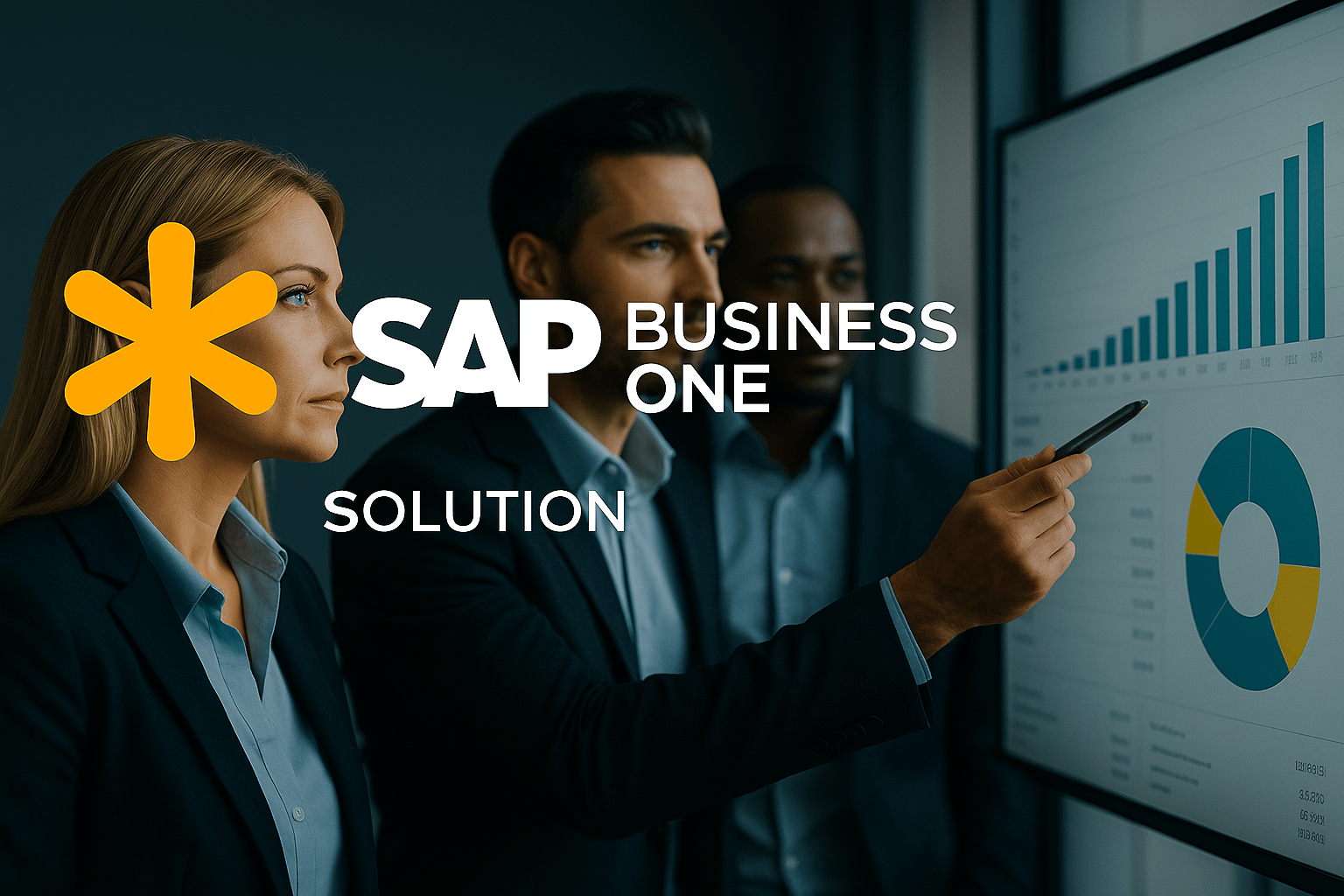In today’s fast-moving business world, data isn’t just important—it’s the lifeblood of smart decisions. For small and midsize enterprises (SMEs), staying competitive means knowing what’s happening in your business right now—and what might happen tomorrow. That’s where SAP Business One and business intelligence (BI) come together to create a powerful combination.
SAP Business One isn’t just an ERP system—it’s a tool that transforms raw data into insights you can act on. For SMEs aiming to grow in 2025 and beyond, this can be a true game-changer.
Why SMEs Need Business Intelligence
Many SMEs think BI tools are only for big corporations. That’s simply not true anymore. Today, even small businesses generate massive amounts of data—from sales transactions and inventory levels to customer interactions and financial metrics. Without BI, much of that data sits unused, buried in spreadsheets or disconnected systems.
SMEs need business intelligence to:
✅ Identify trends before they become problems
✅ Understand customers better
✅ Manage resources efficiently
✅ Make decisions based on facts, not guesswork
In a market where speed and agility are critical, BI can mean the difference between growth and falling behind.
How SAP Business One Integrates Business Intelligence
SAP Business One puts powerful BI tools directly into the hands of SME leaders. Here’s how it works:
Real-Time Data Analysis
SAP Business One constantly updates data from every department. Instead of waiting for monthly reports, managers get instant access to:
- Sales performance
- Inventory levels
- Financial metrics
- Production stats
Real-time data means you can react faster to opportunities or challenges.
Interactive Dashboards and KPIs
With SAP Business One, data isn’t just numbers on a page. Visual dashboards display:
- Key performance indicators (KPIs)
- Charts and graphs
- Alerts for critical business events
This makes complex data easy to understand—and easy to share across the business.
Drill-Down Reporting
Ever see a surprising number and wonder what’s behind it? SAP Business One lets you click into reports and drill down to the transaction level. You can:
- Investigate discrepancies
- Analyze trends
- Identify root causes of issues
This level of detail empowers managers to make smarter, faster decisions.
Predictive Analytics for Future Planning
SAP Business One includes tools for predictive analytics. SMEs can:
- Forecast sales trends
- Predict inventory needs
- Plan budgets with greater accuracy
Instead of just reacting to the past, businesses can proactively shape the future.
Key Benefits of SAP Business One Business Intelligence for SMEs
Let’s look at why BI in SAP Business One is such a powerful advantage for growing businesses.
1. Faster Decision Making
Real-time dashboards and instant reports replace delays caused by manual data collection. Managers can:
- Approve orders faster
- Respond quickly to supply chain issues
- Make pricing changes based on live market data
Speed is a competitive advantage—and SAP Business One delivers it.
2. Data-Driven Culture Across Teams
BI isn’t just for managers. SAP Business One empowers teams at every level:
- Sales reps can view their pipelines and target high-value leads.
- Operations managers can track production efficiency.
- Finance teams can monitor budgets in real time.
When everyone has access to insights, your entire organization becomes more agile.
3. Competitive Advantage in the Market
Businesses that understand their data can spot trends before competitors do. With SAP Business One:
- Identify emerging market demands
- Launch new products confidently
- Adjust strategies based on real-time insights
This gives SMEs a significant edge in crowded markets.
4. Improved Financial Insights
Instead of waiting for the month-end close, CFOs and finance teams can see:
- Cash flow in real time
- Profitability by product or customer
- Financial risks before they escalate
Better financial visibility leads to smarter decisions and fewer surprises.
5. Better Customer Understanding
Data reveals patterns in customer behavior. SAP Business One helps SMEs:
- Segment customers by buying habits
- Spot cross-selling opportunities
- Improve marketing campaigns for better ROI
Happy customers mean repeat business—and better profits.
Real-World Examples of BI in Action
Consider these examples:
✅ A manufacturing SME used SAP Business One to track machine downtime and discovered one production line was causing 40% of all delays. Fixing it improved delivery times and customer satisfaction.
✅ A retail business identified slow-moving products through BI dashboards, allowing them to adjust pricing and reduce excess inventory.
✅ A wholesale distributor used SAP Business One to analyze sales territories, helping sales teams focus on the highest-value accounts and increasing revenue by 15%.
These stories show how even small businesses can achieve big results with the right insights.
FAQs
1. Is business intelligence too complex for SMEs?
Not at all. SAP Business One is designed for SMEs. It provides powerful BI tools without requiring a team of data scientists.
2. Can SAP Business One integrate with external BI tools?
Yes! SAP Business One can integrate with tools like SAP Analytics Cloud, Microsoft Power BI, and other reporting solutions.
3. How fast can SMEs start using BI in SAP Business One?
Basic dashboards and reports are available out-of-the-box. Many SMEs start gaining insights within weeks of implementation.
4. Is BI in SAP Business One available in the cloud?
Absolutely. Cloud deployments include the same BI capabilities, accessible from anywhere.
5. How does BI help reduce costs for SMEs?
By revealing inefficiencies, helping manage inventory better, and improving forecasting, BI helps SMEs save money and operate leaner.
6. Is training required to use BI features in SAP Business One?
Some training helps users get the most out of dashboards and reports, but the tools are designed to be user-friendly—even for non-technical staff.
Conclusion
Data is power—and for SMEs, that power can fuel growth, efficiency, and competitive advantage. With SAP Business One and business intelligence, small and midsize companies gain the tools they need to see clearly, act quickly, and plan confidently for the future.
Ready to unlock the full value of your business data? Learn more about SAP Business One at SAP’s official website.



